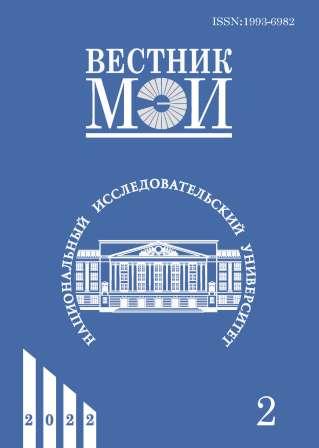Исследование и расчет электромеханических характеристик электросамоката
Аннотация
Приведена конструкция электросамоката. Показана целесообразность использования двигателя обращенного типа с внешним ротором, являющимся частью колеса. На внутренней поверхности ротора, обращенной к воздушному зазору, расположены постоянные магниты с большим числом пар полюсов. Данная конструкция позволяет развивать низкие скорости и избавляет от механических редукторов.
Рассмотрим выбор главных размеров ротора на основе удельной касательной силы. Статор состоит из корпуса сердечника с обмоткой, обычно трехфазной. В двигателях самоката целесообразна сосредоточенная обмотка с дробным q, наматывающаяся вокруг зубца и образующая на нем отдельную катушку, принадлежащую к одной из фаз. В подобной обмотке не пересекаются концевые витки, её лобовые части намного короче, чем у распределенных обмоток. Обмотка статора питается от инвертора, управляемого синхронно с вращением ротора (ДПР). Рассматриваемый электромеханический преобразователь ничем не отличается от обычной синхронной машины. Режим работы с постоянством момента нехарактерен для двигателя самоката. При изменении режима работы, например, при переходе на другой участок пути, все процессы развиваются аналогично тем, которые имеют место в обычных двигателях постоянного тока. Для подтверждения этого дан расчет двигателя, определены его параметры. Создан алгоритм расчета механических и рабочих характеристик самоката.
Литература
2. Смилянец Л.В., Литвиненко Т.П. Использование индивидуальных экологичных транспортных средств в улично-дорожной структуре населенного пункта // Новые идеи нового века: Материалы Междунар. науч. конф. Хабаровск: Изд-во Тихоокеанского гос. ун-та, 2013. Т. 2. С. 428—433.
3. Агеев А.Н., Айтенов А.А., Чебоксаров А.Н. Классификация двухколесного электротранспорта в различных странах мира // Техника и технологии строительства. 2020. № 2(22). С. 4—8.
4. Грухлер Г. Кранц Й., Завишка Т. Системы электропривода для транспортных средств — концепции, примеры энергосбережения // Электротехнические и компьютерные системы. 2011. № 3(79). С. 123—127.
5. Ostroverkhov M. Trinchuk D. Study into Energy Efficiency of the Drive of Electric Vehicles with an Independent Power Supply Depending on the Configuration of the Power Source // Technology Audit and Production Reserves. 2018. V. 4. No. 1(42). Pp. 45—50.
6. Libert F. Design, Optimization and Comparison of Permanent Magnet Motors for a Low-speed Direct-driven mixer. Stockholm: Royal Institute of Technology, 2004.
7. Lindegger M. Economic Viability, Applications and Limits of Efficient Permanent Magnet Motors. Switzerland: Swiss Federal Office of Energy, 2009.
8. Шевченко А.Ф., Честюнина Т.В. Анализ магнитодвижущих сил дробных зубцовых обмоток электрических машин // Электротехника. 2009. № 12. C. 3—7.
9. Бухгольц Ю.Г., Приступ А.Г., Честюнина Т.В. К вопросу расчета индуктивностей дробных зубцовых обмоток // Электро. Электротехника, электроэнергетика, электротехническая промышленность. 2012. № 1. С. 48—52.
10. Евстратов А.Э. Обзор возможных систем управления электроприводом на базе синхронного двигателя с постоянными магнитами // Энергетика и энергосбережение: теория и практика: Сборник материалов I Всерос. науч.-практ. конф. Кемерово: Изд-во Кузбасского гос. техн. ун-та им. Т.Ф. Горбачева, 2014. С. 71.
11. Давыдкин М.Н. Разработка модели синхронного двигателя на постоянных магнитах для электропривода транспортных средств // Наука и производство Урала. 2016. № 12. С. 48—52.
12. Петров Г.Н. Электрические машины. Ч. 2. Асинхронные и синхронные машины. М.-Л.: Госэнергоиздат, 1968.
13. Копылов И.П. и др. Проектирование электрических машин. М.: Высшая школа, 2002.
14. Gieras Ja.E., Wing M. Permanent Magnet Motor Technology. N.-Y.: Marcel Dekker Inc, 2002.
---
Для цитирования: Соколова Е.М., Белов А.Д. Исследование и расчет электромеханических характеристик электросамоката // Вестник МЭИ. 2022. № 2. С. 77—85. DOI: 10.24160/1993-6982-2022-2-77-85.
#
1. McCallum R.W. e. a. Practical Aspects of Modern and Future Permanent Magnets. Annual Rev. Materials Research. 2014;44:451—477.
2. Smilyanets L.V., Litvinenko T.P. Ispol'zovanie Individual'nykh Ekologichnykh Transportnykh Sredstv v Ulichno-dorozhnoy Strukture Naselennogo Punkta. Novye Idei Novogo Veka: Materialy Mezhdunar. Nauch. Konf. Khabarovsk: Izd-vo Tikhookeanskogo Gos. Un-ta, 2013;2:428—433. (in Russian).
3. Ageev A.N., Aytenov A.A., Cheboksarov A.N. Klassifikatsiya Dvukhkolesnogo Elektrotransporta v Razlichnykh Stranakh Mira. Tekhnika i Tekhnologii Stroitel'stva. 2020;2(22):4—8. (in Russian).
4. Grukhler G. Krants Y., Zavishka T. Sistemy Elektroprivoda dlya Transportnykh Sredstv — Kontseptsii, Primery Energosberezheniya. Elektrotekhnicheskie i Komp'yuternye Sistemy. 2011;3(79):123—127. (in Russian).
5. Ostroverkhov M. Trinchuk D. Study into Energy Efficiency of the Drive of Electric Vehicles with an Independent Power Supply Depending on the Configuration of the Power Source. Technology Audit and Production Reserves. 2018;4;1(42):45—50.
6. Libert F. Design, Optimization and Comparison of Permanent Magnet Motors for a Low-speed Direct-driven mixer. Stockholm: Royal Institute of Technology, 2004.
7. Lindegger M. Economic Viability, Applications and Limits of Efficient Permanent Magnet Motors. Switzerland: Swiss Federal Office of Energy, 2009.
8. Shevchenko A.F., Chestyunina T.V. Analiz Magnitodvizhushchikh Sil Drobnykh Zubtsovykh Obmotok Elektricheskikh Mashin. Elektrotekhnika. 2009;12:3—7. (in Russian).
9. Bukhgol'ts Yu.G., Pristup A.G., Chestyunina T.V. K voprosu Rascheta Induktivnostey Drobnykh Zubtsovykh Obmotok. Elektro. Elektrotekhnika, Elektroenergetika, Elektrotekhnicheskaya Promyshlennost'. 2012;1:48—52. (in Russian).
10. Evstratov A.E. Obzor Vozmozhnykh Sistem Upravleniya Elektroprivodom na Baze Sinkhronnogo Dvigatelya s Postoyannymi Magnitami. Energetika i Energosberezhenie: Teoriya i Praktika: Sbornik Materialov I Vseros. Nauch.-prakt. Konf. Kemerovo: Izd-vo Kuzbasskogo Gos. Tekhn. Un-ta im. T.F. Gorbacheva, 2014:71. (in Russian).
11. Davydkin M.N. Razrabotka Modeli Sinkhronnogo Dvigatelya na Postoyannykh Magnitakh dlya Elektroprivoda Transportnykh Sredstv. Nauka i Proizvodstvo Urala. 2016;12:48—52. (in Russian).
12. Petrov G.N. Elektricheskie Mashiny. Ch. 2. Asinkhronnye i Sinkhronnye Mashiny. M.-L.: Gosenergoizdat, 1968. (in Russian).
13. Kopylov I.P. i dr. Proektirovanie Elektricheskikh Mashin. M.: Vysshaya Shkola, 2002. (in Russian).
14. Gieras Ja.E., Wing M. Permanent Magnet Motor Technology. N.-Y.: Marcel Dekker Inc, 2002.
---
For citation: Sokolova E.M., Belov A.D. Investigation and Calculation of Electric Scooter Electromechanical Characteristics. Bulletin of MPEI. 2022;2:77—85. (in Russian). DOI: 10.24160/1993-6982-2022-2-77-85.




